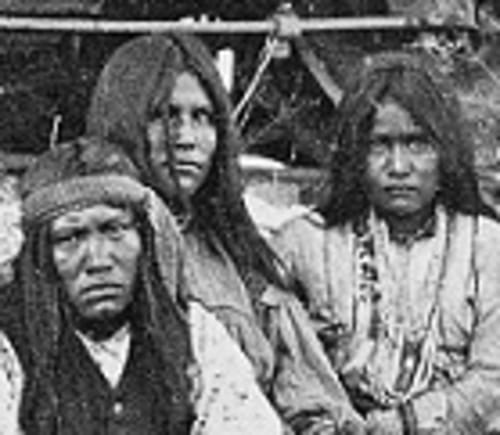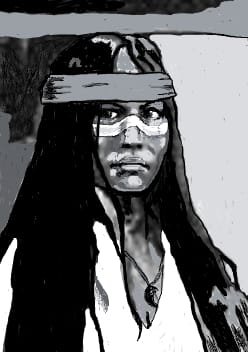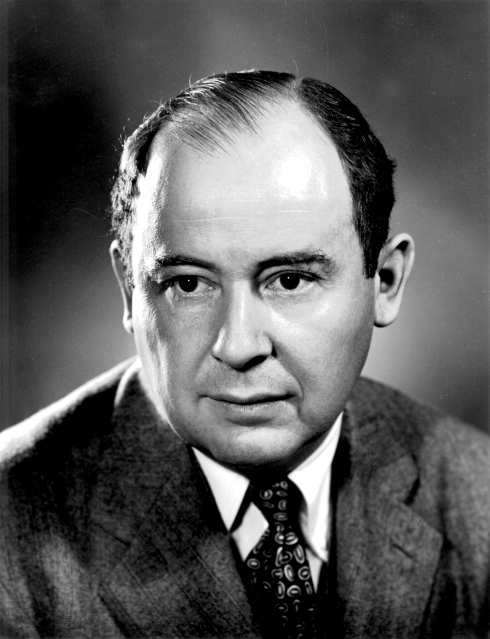LOZEN, WARRIOR SEERESS OF THE APACHE
This Power is mine for locating the enemy. I search for that enemy which only Ussen the Great can show to me. This power I may use for the good of my people. - Lozen.

The subject of the seeress and warrior woman Lozen touches on the shamanic practices of the Native Americans, in particular, the Apache. Lozen’s predictive powers have an obvious parallel with An Da Shealladh, the two sights (or second sight) of Gaelic and Norse tradition. In Njal’s Saga the eponymous hero of the narrative has prophetic powers and at one point is able to see the destruction of his kin by fire. Gaelic lore is also rich in prophecy, from individuals with the ability to see into the future as well as beings connected with future events, such as the washer at the ford, a spectral female who was seen dipping in a river or stream the bloodstained garment of a hero about to die, or the bean sì that was heard wailing above the house at an impending death.
Lozen’s peculiar ability involved invoking the god Ussen, contacting the mountain spirits (compare these with the daoine sì or fairy folk of Gaelic tradition or the Norse landvættir, land spirits) and experiencing a tingling in her upraised hands that conveyed to her the proximity and location of an enemy. Lozen is a classic example of a warrior woman defending her people and native tradition against the forces of ‘civilisation’ and ‘manifest destiny’, backed by a religion completely alien to her.

Lozen was a warrior woman and prophetess of the Chihenne band of the Chiricahua Apache. She was born in the 1840s near Ojo Caliente, New Mexico. Sister of the war chief Victorio, she became famous both for her fighting ability and her extraordinary arcane powers while up against the combined U.S. and Mexican armies.
In the year 1877, unable to further endure the enforced hell of the San Carlos reservation in Arizona, Victorio, Lozen and their followers broke out and took the war trail, pursued by American troops. During the various campaigns she was involved in, with Victorio, with old Nana and with Geronimo, Lozen continually frustrated the U.S. cavalry by forewarning her people of their location with her gift of the second sight.
From an early age Lozen dedicated herself to the way of the warrior when most other Apache girls were learning how to cook, keep camp and raise children. In the words of her brother Victorio:
Lozen is my right hand ... strong as a man, braver than most, and cunning in strategy. Lozen is a shield to her people.
Lozen underwent initiation as a medicine woman after a four night fast in the mountains. Four is a sacred number to the Apache and all their ceremonies took place over four nights. She sought contact with the mountain spirits that would help her gain the power she needed from Ussen, the Apache creator - the power to heal, the power to see.
Ussen is the god of the Apache warriors. There is also Esdzanadehe or White Painted Woman, who presides over womanhood. The sunrise ceremony saw girls become women through invoking and embodying the essence of Esdzanadehe. Their faces were painted white and they were believed to have the power to heal.
Lozen invoked the Apache god Ussen with arms raised whenever she required knowledge of the enemy. Her hands would tingle and the palms would change colour. In this way she was said to feel their presence in a given area and even to know how many there were. The Apaches were already famed for their ability to run rings around the U.S. army, but Lozen’s supernormal intuition gave them an even greater edge.
The Apaches were among the greatest guerrilla fighters in the world, mounted or on foot. They had honed their skills through generations of fighting Spanish, Mexicans and Americans as well as other native groups, particularly their arch enemies, the Comanche. They rarely risked an open engagement with the enemy unless there was a reasonable chance of success, preferring to employ stealth, psychological tactics, shooting from concealment and constantly changing positions to frustrate and alarm their adversaries. They were masters of concealment and the hit-and-run.
Hardy beyond measure, they could cover an average of seventy or eighty miles in a day at a steady dog trot, endure extreme desert heat on very little water and even track across rock. Their weapons were the bow, lance and war club, and the knife, with which they were particularly expert. They also used a club made from the jawbone of a horse or buffalo with the teeth still attached. But they were also proficient with handguns and rifles, Spencer and Springfield carbines and repeating Winchesters. Constantly thwarted in their attempts to contain their elusive enemy, the U.S. army was forced to rely on the tracking skills of other Apaches, typically those from bands hostile to those they were pursuing.
Born warriors in the face of an increasingly alien world that stripped them of territory, put bounties on their heads and scalps, and threatened to eradicate them, the free Apache were determined to defend their way of life to their last breath by raiding, torturing and killing their enemies. Their very name became a byword for terror.
Among a people in whom courage was taken for granted, Lozen’s bravery was second to none. When the U.S. cavalry treacherously attacked her camp in violation of a treaty, killing women and children, including Victorio’s wife and family, she rode through a storm of enemy bullets to rescue her surviving little nephew.
Lozen’s daring was a constant inspiration to her people. On one occasion when the Apaches were being closely pursued by the cavalry, the women and children drew up in fear at the prospect of crossing the mighty Rio Grande. Behind them, the warriors stood ready to confront the enemy. Lozen rode forward and heeled her horse, rearing on the riverbank, before taking the plunge, rifle held high above her head. James Kaywaykla, one of the children at the time, wrote years later in his recollections: 'I saw a magnificent woman on a beautiful horse - Lozen, sister of Victorio - Lozen, the woman warrior!' The others took courage and followed her to the other side. She then told the boy's grandmother to take charge. 'I must return to the warriors,' she said, swimming her horse back across the river.
All through the Victorio campaign Lozen’s supernormal talent ensured constant success for the Apache. Outnumbered and outgunned, they eluded their pursuers while engaging in devastating hit and run tactics. By knowing exactly where the cavalry were in advance, and often stealthily slipping past them, the Apaches were like ghosts of the desert. Lozen proved herself a true shield of her people.
There came the fateful day however when Victorio’s luck was to run out. One of the Apache women fell into labour. As the trusted medicine woman, Lozen was duty bound to stay with her for the birth, while her brother had to lead the rest of the band to Mexico without her magical abilities to guide them. Victorio and his people rode into an ambush by Mexican troops and their Tarahumara Indian allies commanded by Joaquin Terrazas, in which he and most of the others lost their lives in what became known as the Battle of Tres Castillos. James Kaywaykla, the boy mentioned earlier at the river crossing, was one of the few survivors.
Lozen helped the woman in her charge give birth as the U.S. cavalry searched all around them. Apache women could endure the pains of labour in grim silence in order to prevent being found by the enemy. With the woman and child under her protection and armed with her rifle and knife, Lozen faced a long journey on foot through hostile territory. Not wanting to betray their position with a gunshot, she killed a steer for food with her knife. Another of her talents however was her raiding magic, her skill at ‘acquiring’ horses, from which she had her name Lozen (One Who Has Stolen Horses). She braved enemy gunfire to snatch a cavalry horse for her companion and later, a Mexican vaquero’s mount for herself, and brought them to the relative safety of the Mescalero reservation in New Mexico territory.
After the fall of Victorio, Lozen made her way to rejoin the survivors in the Sierra Madre under the war leaders Nana and Geronimo. Nana, who had already been elderly when the campaigns started, was now in his late eighties or early nineties. ‘There is no warrior more worthy than the sister of Victorio,’ he said.
At one point this Apache band was down to only sixteen warriors. Deployed against them were five thousand cavalry accompanied by Indian scouts. But incredibly the Apaches were still able to put up a stout defence, eluding or attacking troops and raiding widely so that it seemed their numbers were far greater than the reality. Apacheria, their native domain, had once been the size of at least three states. Now they were fugitive warriors in an occupied territory, still carrying the idea of sovereignty in their fierce hearts and indomitable spirits.
When Geronimo eventually surrendered in 1886, he had been told he and his people would face two years imprisonment at Fort Pickens, Florida and then be free to return to their old lands in New Mexico. One of the reasons behind this was to get Geronimo as far from the Arizona authorities as possible, who would probably have hung him on the spot on account of his many killings and depredations. But as usual, the Apache were lied to.
They remained at Fort Pickens until 1888, many dying of disease in a climate totally unsuited to them, after which the remainder were transferred to Mount Vernon Barracks in Alabama. To these people, being confined and locked away from their free life in the mountains, would have been considered a death sentence in itself. Lozen, along with the rest, (including the Apache scouts who had helped the U.S. army track Geronimo down), were prisoners of war. The brave woman who had fought so hard for the freedom of her people was to die in 1889 of tuberculosis as a captive of the enemy, buried in an unmarked grave far from her beloved land. She remains a sacred figure to the Apache and an icon with supernormal gifts.
Amazingly, this was not the end of Apache resistance. The last recorded raid in America was 1924. But Apache groups in northern Mexico were still fighting into the early 1930s.
With regard to medicine or power among the Chiricahua, Lozen’s people, it appears to have been generally acquired by vision quest, during which the individual appealed to the deity Ussen and the spirits of the mountains.
John G. Bourke, Captain of the 3rd US Cavalry, makes mention of an Apache woman known as Tze-go-juni (Pretty Mouth), who was regarded as someone with powerful medicine for having narrowly avoided a lightning strike and surviving a night attack by a mountain lion. Though Bourke scoffs at the idea that this would be considered enough to warrant strong medicine, such close shaves would have singled this woman out as hallowed by the people, who respected the forces around them. The Apache mystical world view was a thing totally alien to most whites.
The tingling in Lozen’s upraised hands that warned her of approaching enemies may have been a manifestation of what Keith Basso referred to as diyí, a force believed to be associated with divine powers, totem animals, plants and the elements.
A recent film Apache Chronicle features Lynnette Haozous as Lozen.
Recommended Reading:
Ball In the Days of Victorio: Recollections of A Warm Springs Apache University of Arizona Press
Basso Western Apache Witchcraft University of Arizona Press
Bourke The Medicine-Men of the Apache Project Gutenberg 42616

CELTICA PRESS © Páll Thormod Mac Alpin Morrisson 2025



Comments ()